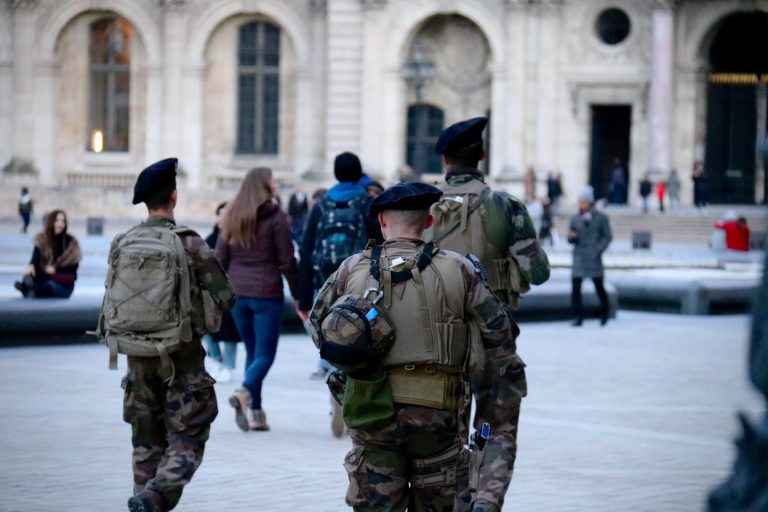In recent years, the number of terrorist attacks on places of worship in Europe have consistently increased. These attacks are often carried out by single individuals or small groups using low-intensity methods and with a lack of strong organisation, which makes them difficult to foresee and prevent. In response to these threats, the European Commission has launched a call for proposals, in the context of the Internal Security Fund – Police, to improve the security of places of worship across European Union. The call for proposals includes a range of activities aimed at enhancing cooperation between public entities and religious leaders, developing public awareness campaigns, sharing knowledge and good practices, and providing training to improve security programs. With the rise of religious and cultural conflicts, the need to ensure the safety and preservation of these sites, is becoming crucial.
One of the goals is to develop a common methodology, as we have achieved in the SHIELD project currently underway, for protecting sacred places that takes into account the unique challenges faced by different religious communities. The SHIELD project also administrated several questionnaires to the Catholic, Muslim and Jewish Communities and one of the conclusions is that there are different and common points in the type of attacks and in the reasons behind terrorist attacks. In this regard, the SHIELD project provides concrete answers to the issue of protection of places of worship by laying the foundations of a methodology and a security approach that can be applied to all three religions and in general to all sacred places.
Traditionally, the issue of security for sacred places has been approached in a vertical or individualistic manner. This means that each site is treated separately, with its own set of security measures and protocols. While this approach may work in some cases, it fails to address the broader issues that affect all sacred places. To address this gap, there is a growing need to develop a common methodology. Such a methodology would be based on a comprehensive and holistic approach, taking into account the unique characteristics and needs of each site, as well as the broader cultural and societal context in which they exist.
One key aspect of this methodology would be the development of a set of best practices for the protection of sacred places. These best practices would be based on a thorough understanding of the various threats that these sites face, including theft, vandalism, arson etc. and not only the danger of terrorism. They would also take into account the various stakeholders involved in the protection of these sites, including religious leaders, local communities, and LEAs. Another important aspect of this methodology would be the development of a framework for collaboration and information sharing among stakeholders. This would involve the establishment of networks and partnerships between different organizations and agencies involved in the protection of places of worship. It would also involve the sharing of best practices among aforementioned stakeholders, as well as the development of joint training programs and exercises and tools to self-assessment the level of risks.

One of the key challenges in protecting places of worship is the need to balance security with openness and accessibility. Places of worship are often seen as symbols of community and inclusivity, and many religious leaders are reluctant to implement measures that might make their congregations feel unwelcome or intimidated. However, the need for security cannot be ignored, hence religious leaders must work with public authorities to develop effective strategies for protecting their communities.
Another important aspect of improving security for places of worship is to analyse the past attacks and threats in order to identify patterns and vulnerabilities. An analysis of the last 20 years attacks in the European Union, carried out by the SHIELD project, has helped in acquiring information for the development of effective prevention and response strategies such as fire protection measures, video surveillance systems, and anti-ramming barriers for access gates.
Another further crucial aspect of improving security is to involve religious leaders and the community of believers in risk awareness and crisis management techniques. Unfortunately, many religious leaders are unprepared when it comes to security measures, emergency management, and involving the community in security and safety related procedures. Protocols for emergency situations must be developed strengthening the interaction between places of worship and public authorities to ensure citizen safety. All citizens, regardless of their religious confession or ethnicity, should be concerned about religious freedom and places of worship safeguard, as they are pillars of the democratic principles.
Community involvement is also important for sharing information related to suspicious behaviours inside and outside places of worship. In many cases, attacks on places of worship could have been prevented if the community was more aware of the signs of impending violence and reported their concerns to the appropriate authorities. Just to give some examples: the attack on Brest Mosque in 2019 was anticipated by a series of inspections carried out by the attacker in more or less seven days before committing the violent action against the imam and against his collaborator. These observations could be extended to the attacks carried out against the Jewish sites, as analysed for the Jewish school of Toulouse in 2012 and for the attack on the Halley Synagogue in 2019 and to the Christian sites as well, as analysed in the case study of Notre Dame de Nice (2020) and Saint Etienne du Rouvary (2016).
While attacks on Muslim and Christian places of worship are generally low-impact terrorist actions with high symbolic significance and strong political implications, Jewish places of worship face a unique set of challenges. Jewish communities have long been targeted by violent extremists, and have paid a high price in terms of human lives, injuries, and damages. As such, special attention must be paid to the security needs of Jewish places of worship.
In conclusion, improving security measures for places of worship in Europe is a complex challenge that requires cooperation between public authorities, religious leaders, and the community. By developing common methodologies to share for protecting sacred places, analysing past attacks and threats, involving religious leaders and the community in risk awareness and crisis management techniques, and strengthening protocols for emergency situations, it is possible to enhance the security and safety of citizens in places of worship. By using a comprehensive and holistic approach, it is possible develop effective strategies and best practices that address the unique needs and challenges of these sites. With ongoing collaboration and research, SHIELD will continue to improve its skills on the best methods of protecting these important cultural and religious landmarks for the generations to come.

